2020 was a difficult year for the arts. Covid-19 and its containment measures led to a drastic reduction of physical interpersonal contacts and, consequently, of artistic contaminations. However, museum closures and many other complications didn’t prevent creativity from finding its own space in the pandemic, which actually became the focus of new inspirations and experimentations. In many cases, the art world reinvented itself. The 2020 edition of UNIDEE residency programs developed in fact from this global issue, as clearly indicated by the basic topic of the educational experience: “Embedded Arts Practices in a Post-Pandemic Future”. Cittadellarte’s proposal was rich and diverse at both contents and quantitative levels, as the numbers tell us: 10 weeks of hybrid residency of which 7 in presence and 3 completely online; 13 mentors and 5 guests from the fields of international research, art and curatorship; 46 participants; 10 seminars; 17 appointments including visits to local factories and talks with entrepreneurs and associations not belonging to the art world; a final event coordinated by the resident duo Orecchie d’Asino; a digital archive; 12 collaborations with institutions, museums, universities, artistic spaces and partners. The Coronavirus didn’t therefore stop or limit UNIDEE’s activities, becoming instead the object of study of the residency, which contextualised it in the socio-artistic sector.
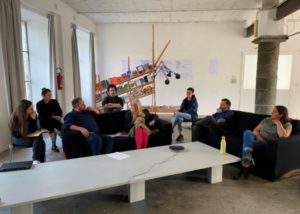
The words of UNIDEE 2020’s Visiting Research Curator about the participants
UNIDEE 2020 received over 100 applications and selected 46 participants coming from over 25 different countries, in Europe but also Palestine, Colombia, South Africa, Australia, Canada and the United States. The group included graduate students, visual artists and performers, photographers, curators, researchers, architects, critics, anthropologists, museum and cultural operators, students and musicians; the average age was 33. We decided to offer partial grants to all the selected applicants as a way of extending the participation and facilitating the involvement of artists that wouldn’t otherwise have been able to participate.
“The residency – said Andy Abbott – aimed at collectively and collaboratively addressing the key challenges and themes in the area of embedded and socially engaged art practice offering perspectives, case studies and mentoring opportunities from practitioners, curators and arts organisers and theorists that enriched and helped frame the participants’ practices and projects. Through the lens of a ‘post-pandemic’ future, participants gained practical and theoretical knowledge about the past, present and future landscapes of art for responsible transformation of society that they can then apply in both the post-industrial context of Biella and their own locale.”
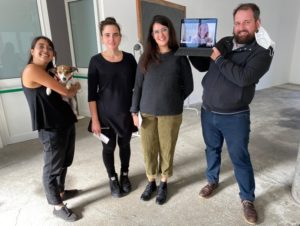
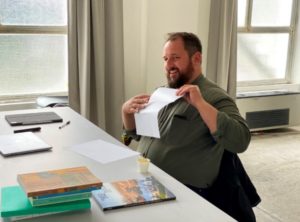
The methodologies – Lectures and seminars
The residency led to the development of new research and work methodologies, starting with a weekly programme of lectures and seminars delivered by guest mentors. These mentors were experienced artists, curators, arts organisers and researchers in the field of embedded practice from across the globe*. Where possible sessions were delivered in the UNIDEE Project Space within Cittadellarte to residents taking part in their ‘one-week intensive’ and broadcast via Zoom to the entire cohort. Each seminar included a presentation and Q+A, and an activity or discussion for smaller groups using Zoom’s Breakout Rooms (all seminars were recorded and made available to those that weren’t able to attend live). There were 10 seminars for a total of 17 presenters, while attendance at each ranged from 25 (programme additions) to 40 (plenary), with an average of 30 per session.
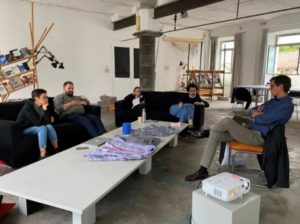
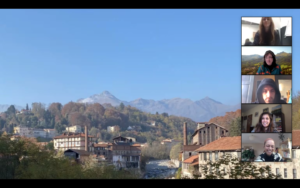
The methodologies – Independent action research
Individual residents carried out an independent action research in their own locale. The residents of the programme were tasked with undertaking an action research project using artistic methods in their own locale for the 10 weeks of the programme. Residents were selected on their ability or willingness to pursue a line of inquiry with a defined area or community, as distinct from a proposed project with a predetermined outcome. The purpose of the 10 weeks of the residency was to in some cases initiate and others accelerate the development of this action research that would likely result in a proposal for a longer term project by the end of the residency. Using the Padlet platform residents were provided with a digital space in which to share the progress of their projects. This acted as an ‘open studio’ for the residency as a whole where residents could see how each other were progressing and start to make connections and collaborations. Projects ranged from artistic projects looking at care developed through postcards and mail, to the creation and distribution of ‘pedagogic suitcases’ for children in rural areas of Colombia.
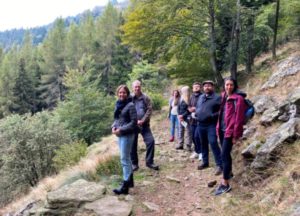
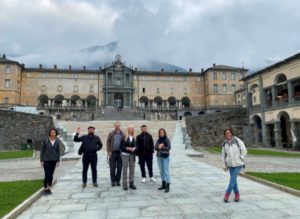
The methodologies – Group critiques and conversations in the one-week intensive
Residents were invited in small groups to spend a week in Cittadellarte, or where travel was impossible, to take part in an intensive week online. This was an opportunity for residents to share, unpack, reflect and perhaps test out elements of their research in a different setting collectively. This happened primarily through two group critiques (one at the start and one at the end of the one-week intensive) facilitated by the curator and guest mentor at which works in progress were shared and discussed in a peer-to-peer format. During this week UNIDEE would also arrange talks and visits, and make connections with residents from other weeks that would help feed their research and provide them with useful opportunities for articulating their research.
The methodologies – Informal and self-organised learning
When physically present during their one-week intensive, the small groups would live, eat and spend time recreational together outside of the scheduled programme. In the cases of partially or entirely virtual one-week intensives, the residents were encouraged to create a forum for informal communication (WhatsApp group, Facebook group, etc) and self-organise opportunities for collective activities that they could do ‘together-apart’ such as movement, yoga, word puzzles, walks in their respective neighbourhoods or natural environments. The residents organized their own ‘wrap party’ in the style of a cabaret for the closing of the residency.

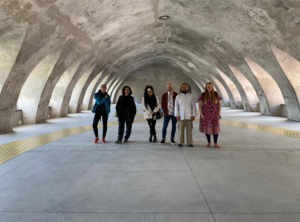
The methodologies – Handover and traces
At the end of the one-week intensives residents were asked to ‘leave a trace’ of where they were currently with their research. This could be an image, print or other material that would give a sense of the resident’s project, the direction it may be going in and their experiences during the one-week intensive. These traces were displayed together in the UNIDEE Project Space, creating a collective exhibition that grew over the course of the 10 weeks and could be explored online by those that were unable to visit Cittadellarte. The display was used as the basis for the ‘handover’ to the subsequent group, through which opportunities for collaboration and synergies with the other residents may emerge. At the end of the residency a ‘final trace’ was requested from the residents representing and reflecting on their research. These ‘traces’, alongside the archive of the Padlet open studio, formed a webzine and print publication documenting the residency.
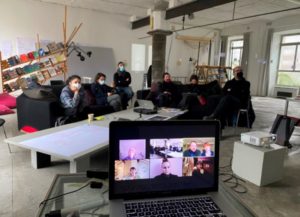
The comment of the director of UNIDEE residency programs
“2020 was a year of challenges for our programme, for our institutions and for art in general,” said Juan Sandoval, “the conditions of fruition and production changed dramatically, of course not only for us but for the entire world. So in this year, the first of the third decade of UNIDEE residency programs, we changed our way of working and our methodology in response to a world situation that forced us to keep social and physical distance, not to travel, to stay at home… The question we asked ourselves was: how can we deal with this situation with a programme of residency without falling into the contradiction of a virtual residency? With Andy Abbott, visiting curator 2020-2022, we therefore reformulated our methodology, always keeping in mind that meeting, being able to talk with others in that space of thought and action that residencies offer had to be protected and as much as possible maintained”.
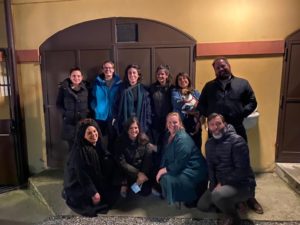
Juan Sandoval than talked about the format of the weeks of activity: “We built a proposal of a hybrid programme able to combine short periods of physical residency in Biella for small groups at a time with moments of exchange and debate online, relying on a series of digital instruments allowing remote meeting. We involved expert mentors that contributed with their practices and their questions on the relationship with one’s own context as subject of discussion and input for the development of the participants’ projects. The topic could not be other than the relationship between artistic practices in the social context and their future in a scenario transformed by the pandemic. Through this experiential process, which revealed itself to be successful, our vision on residencies widened, it generated new ideas responding to the conditions of a changing world, but the awareness of the importance of bringing art into the social processes and using art as an instrument for social transformation remained the fundamental point of the programme, and it is the philosophy on which we will carry on building our future activities”.

